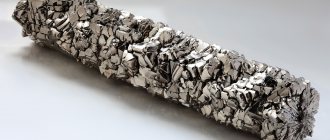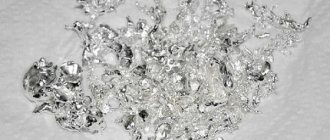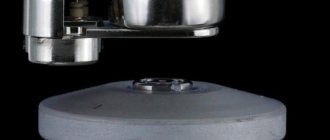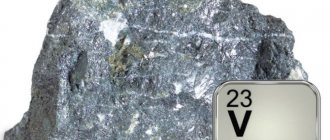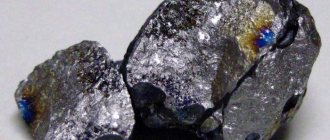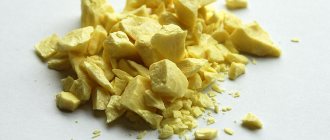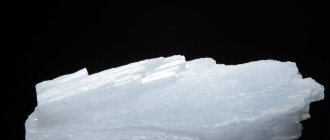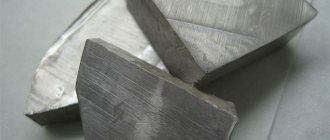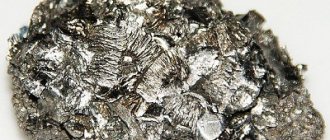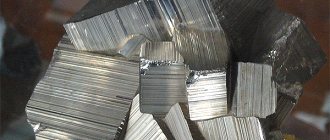Today, it is the chemical industry that consumes the largest amount of sulfur. The most important is sulfuric acid. That is why almost half of the sulfur that is mined around the world is spent on its production. When burned, three hundred kg of sulfur produces about one ton of sulfuric acid.
Another industry that is inextricably linked with mined sulfur and consumes a significant part of it is paper production. To obtain 17 cellulose, you need to use at least one hundred kg of sulfur.
Description and properties of sulfur
Sulfur is a substance that is located in the periodic table in group 16, under the third period and has an atomic number of 16. It can be found both in native and bound form. Sulfur is designated by the letter S. The known formula for sulfur is (Ne)3s23p4. Sulfur as an element is part of many proteins.
If we talk about the structure of the atom of the element sulfur , then in its outer orbit there are electrons, the valence number of which reaches six. This explains the element's property of being maximally hexavalent in most combinations. There are four isotopes in the structure of a natural chemical element, and these are 32S, 33S, 34S and 36S. Speaking about the outer electron shell, the atom has a 3s2 3p4 scheme. The radius of the atom is 0.104 nanometers.
The properties of sulfur are primarily divided into physical types. This includes the fact that the element has a solid crystalline composition. Two allotropic modifications are the main state in which this sulfur element is stable. The first modification is rhombic, lemon-yellow in color. Its stability is lower than 95.6 °C. The second is monoclinic, having a honey-yellow color. Its resistance ranges from 95.6 °C and 119.3 °C.
The photo shows the mineral sulfur
During smelting, the chemical element becomes a moving liquid that is yellow in color. It turns brown, reaching temperatures of more than 160 °C. And at 190 °C the color of sulfur turns into dark brown. After reaching 190 °C, a decrease in the viscosity of the substance is observed, which nevertheless becomes liquid after heating to 300 °C.
Other properties of sulfur:
- Practically does not conduct heat or electricity.
- Does not dissolve when immersed in water.
- It is soluble in ammonia, which has an anhydrous structure.
- It is also soluble in carbon disulfide and other organic solvents.
To the characteristics of the element sulfur, it is important to add its chemical characteristics. She is active in this regard. If sulfur is heated, it can simply combine with almost any chemical element.
The photo shows a sample of sulfur mined in Uzbekistan
With the exception of inert gases. Upon contact with metals, chemicals. the element forms sulfides. Room temperature allows the element to react with mercury. Increased temperature increases the activity of sulfur.
Let's consider how sulfur behaves with individual substances:
- With metals it is an oxidizing agent. Forms sulfides.
- Active interaction occurs with hydrogen at high temperatures – up to 200 °C.
- With oxygen. Oxides form at temperatures up to 280 °C.
- With phosphorus, carbon – it is an oxidizing agent. Only if there is no air during the reaction.
- With fluorine it acts as a reducing agent.
- With substances that have a complex structure - also as a reducing agent.
Historical perspective
It is not clear when sulfur was discovered and its mining began. What is known is that ancient people knew about it long before our era. Early priests used it in their cult rituals and included it in fumigation mixtures. The mineral sulfur was considered a product produced by the gods, who mainly lived in the underworld.
You might be interested in:Phrasal verb give: meanings and exercises
For a long time, as evidenced by historical documents, it was used as a component of flammable mixtures that were used for military purposes. Homer also did not ignore the mineral sulfur. In one of his works, he described “vapors” that had a detrimental effect on humans when burned.
Historians suggest that sulfur was an element in the so-called “Greek fire”, which struck fear into enemies.
In the eighth century in China, it began to be used to prepare pyrotechnic mixtures, including flammable substances resembling gunpowder.
In the Middle Ages, it was one of the three main elements of alchemists. They actively used the mineral native sulfur in their research. This often led to the fact that experiments with it were equated with witchcraft, and this in turn led to persecution by the Inquisition of ancient chemists and their followers. It was from those times, from the Middle Ages and the Renaissance, that the smell of burning sulfur and their gases began to be associated with the acts of evil spirits and devilish manifestations.
Deposits and production
The main source for obtaining sulfur is its deposits. In total, there are 1.4 billion tons of reserves of this substance worldwide. It is mined both by open and underground mining and by smelting from underground.
Sulfur mining in the Kawa Ijen volcano
If the latter case applies, then water is used, which is overheated and melts the sulfur with it. In low-grade ores, the element is contained in approximately 12%. Rich – 25% and more. Common types of deposits:
- Stratiform – up to 60%.
- Salt dome – up to 35%.
- Volcanogenic – up to 5%.
The first type is associated with strata called sulfate-carbonate. At the same time, ore bodies that have a thickness of up to several tens of meters and a size of up to hundreds of meters are located in sulfate rocks. Also, these strata deposits can be found among rocks of sulfate and carbonate origin. The second type is characterized by gray deposits, which are confined to salt domes.
The latter type is associated with volcanoes that have a young and modern structure. In this case, the ore element has a sheet-like, lens-shaped shape. It may contain sulfur in the amount of 40%. This type of deposit is common in the Pacific volcanic belt.
Sulfur deposits in Eurasia are located in Turkmenistan, the Volga region and other places. Sulfur rocks are found near the left banks of the Volga, which stretch from Samara. The width of the rock strip reaches several kilometers. Moreover, they can be found all the way to Kazan.
Sulfur crystals can have various shades of yellow
The photo shows sulfur in rock
In Texas and Louisiana, huge amounts of sulfur are found in the roofs of salt domes. Particularly beautiful Italian crystals of this element are found in Romagna and Sicily. And on the island of Vulcano they find monoclinic sulfur. The element, which was oxidized by pyrite, was found in the Urals in the Chelyabinsk region.
to extract the chemical element sulfur . It all depends on the conditions of its occurrence. At the same time, of course, special attention is paid to safety. Since hydrogen sulfide accumulates along with sulfur ore, it is necessary to take a particularly serious approach to any mining method, because this gas is poisonous to humans. Sulfur also tends to ignite.
Most often they use the open method. So, with the help of excavators, significant parts of the rocks are removed. Then the ore part is crushed using explosions. The lumps are sent to the factory for enrichment. Then - to the sulfur smelting plant, where sulfur is obtained from concentrate.
Sulfur is often transported by sea
In the case of deep occurrence of sulfur in many volumes, the Frasch method is used. The sulfur melts while still underground. Then, like oil, it is pumped out through a broken well. This approach is based on the fact that the element melts easily and has a low density.
A separation method using centrifuges is also known. Only this method has a drawback: sulfur is obtained with impurities. And then it is necessary to carry out additional cleaning. In some cases, the borehole method is used. Other possibilities for mining the sulfur element:
- Steam-water.
- Filtration.
- Thermal.
- Centrifugal.
- Extraction.
How to use sulfur
Sulfur-containing drugs are taken simultaneously with food.
You should only buy purified sulfur from the pharmacy.
Feed sulfur preparations for animals are not intended for human consumption.
The optimal course of treatment would be 1 month. If there is no expected benefit, you should stop taking it until you consult your doctor.
Important! Sulfur is used as prescribed by a doctor in the recommended dosage. Self-administration and prescription of the drug is not recommended
Sulfur powder for oral administration
Powder for internal use is prescribed for chronic diseases:
- polyarthritis;
- sciatica;
- haemorrhoids.
Sulfur for oral administration is purified and comes in tightly sealed jars. Taking purified sulfur is also prescribed for the treatment of enterobiasis.
Medical purified sulfur, or sulfuric anhydride, is beneficial in cases of:
- restoration of the body's defenses;
- for expectorant purposes: hydrogen sulfide is absorbed through the intestines and enters the lungs through the blood;
- for constipation, purified sublimated sulfur is prescribed;
- to enhance the body’s ability to neutralize weak poisons.
When taking sulfur, you can drink enterosorbents if you wish: they will reduce the harm of frequent gas formation that the drug can cause.
Sulfuric ointment
In addition to oral administration, medical purified sulfur is used externally in the form of ointments to treat:
- scabies;
- eczema;
- dermatitis;
- depriving;
- acne.
For dermatitis, medicinal sulfur ointment is recommended to be applied twice a day. The sulfur concentration in the preparation is 5%.
The sulfur concentration in acne ointment is 33%. It is applied to clean skin and dry skin. It is advisable to do the procedure in the evening and not rinse off immediately after applying the product.
During treatment of scabies, do not wash off the ointment from the skin. You should also not shower during therapy. Only after a 5-day course of treatment should you wash everything off thoroughly and put on clean clothes. Bed linen also needs to be changed.
Attention! Sulfur ointment smells unpleasant and leaves greasy marks
Application of sulfur
Most of the mined sulfur is used to make sulfuric acid. And the role of this substance is very huge in chemical production. It is noteworthy that to obtain 1 ton of sulfuric substance, 300 kg of sulfur is needed. Sparklers, which glow brightly and have many dyes, are also made using sulfur. The paper industry is another area where a significant portion of the extracted substance goes.
Sulfur ointment is used to treat skin diseases
Most often, sulfur is used to satisfy industrial needs. Here are some of them:
- Use in chemical production.
- For the production of sulfites, sulfates.
- Production of substances for fertilizing plants.
- To obtain non-ferrous types of metals.
- To give steel additional properties.
- For making matches, materials for explosions and pyrotechnics.
- Paints and fibers from artificial materials are produced using this element.
- For bleaching fabrics.
In some cases, the element sulfur is included in ointments that treat skin diseases.
Oversupply
Sulfur is very useful for the human body, but in nature there are also mineral compounds that are highly toxic - these are hydrogen sulfide, carbon disulfide and various sulfur oxides. They are produced in hazardous industries, fires or chemical warehouses when environmental conditions are violated.
Some researchers believe that the use of sulfur-containing preservatives contributes to the development of bronchial asthma.
To avoid high levels of sulfur in the human body, it is recommended to consume raw, fatty poultry meat and fresh eggs in your diet.
Sulfur price
According to the latest news, the need for sulfur is actively growing. The cost of a Russian product is 130 dollars. For the Canadian version – $145. But in the Middle East, prices increased to $8, resulting in a cost of $149.
The photo shows a large specimen of the mineral sulfur
In pharmacies you can find ground sulfur powder at a price of 10 to 30 rubles. In addition, it is possible to buy it in bulk. Some organizations offer to purchase granular technical gas sulfur .
Micronutrient-rich foods
To ensure a sufficient supply of sulfur to the human body, one must have a balanced diet, which will include both sufficient amounts of protein and products of animal and plant origin. Also don’t forget vitamin B and amino acids. If you wish, you can consult a nutritionist to create a proper diet.
| Product | Sulfur content per 100 g | Percentage of daily requirement |
| Milk (powdered, low-fat) | 339 mg | 35% |
| Milk (powdered, 35%) | 261 mg | 27% |
| Soybean (grain) | 245 mg | 25% |
| Cottage cheese | 222 mg | 23 % |
| Chickpeas | 200 mg | 21 % |
| Chicken egg (white) | 188 mg | 20 % |
| Cottage cheese 9% | 182 mg | 19% |
| Almond | 200 mg | 19% |
| Chicken egg | 178 mg | 19 % |
| Peas | 172 mg | 18 % |
| Chicken egg (yolk) | 172 mg | 18 % |
| Lentils | 163 mg | 16 % |
| Beans | 160 mg | 17 % |
| Quail egg | 125 mg | 13 % |
| Walnut | 102 mg | 11 % |
| Cabbage | 200 mg | 19 % |
| Poppy | 640 mg | 63 % |
| Beef liver | 239 mg | 22 % |
| Mung beans | 238.6 mg | 24 % |
| Hot smoked fish | 233 mg | 24 % |
| Rabbit meat | 225 mg | 23 % |
| Salmon | 225 mg | 23 % |
| Brynza | 221 mg | 21 % |
Occurrence in nature
At one time, sulfur deposits were located in the surface layers of the Earth. They could be easily found and used by people. Today, this is more complicated, since at present the natural deposits of sulfur ore are located in close proximity to volcanoes. The substance is released from the craters as a gas, which when exposed to cold air hardens, forming beautiful yellow deposits along the volcano's rim. Large reserves are still of underground origin. Sulfur is also found in a number of important minerals: barite (barium sulfate), celestine (strontium sulfate), cinnabar (mercuric sulfide), galena (lead sulfide), pyrite (iron sulfide), sphalerite (zinc sulfide), and stibnite (antimony sulfide).
MORPHOLOGY
Native sulfur
Forms truncated-bipyramidal, less often bipyramidal, pinacoidal or thick-prismatic crystals, as well as dense cryptocrystalline, confluent, granular, and less often fine-fibrous aggregates. The main forms in crystals: dipyramids (111) and (113), prisms (011) and (101), pinacoid (001). Also intergrowths and druses of crystals, skeletal crystals, pseudostalactites, powdery and earthy masses, deposits and adhesives. Crystals are characterized by multiple parallel intergrowths.
general information
Sulfur belongs to the chalcogen group of elements, which also includes oxygen, selenium, tellurium and polonium. The term "chalcogen" comes from two Greek words meaning "ore-forming". Ore is a naturally occurring mineral that is used as a source for an element. Many ores are compounds of metal and oxygen or metal and sulfur. Compounds containing at least two elements, one of which is sulfur, are called sulfides. For example, pyrite, a mineral that has a beautiful golden color and metallic luster, is iron sulfide. It is also known as "fool's gold". The physical and chemical characteristic properties of sulfur have been known since ancient times. It often appears as a shiny yellow powder. When it burns, it produces a clear blue flame and a very strong choking odor.

